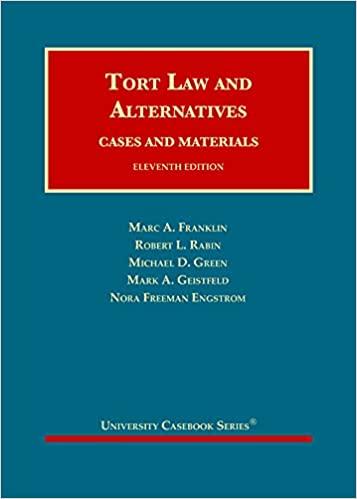Question
The October 2008 credit crisis nearly toppled the U.S. economy. Hundreds of thousands of homes were foreclosed by banks, which led to a vicious cycle
The October 2008 credit crisis nearly toppled the U.S. economy. Hundreds of thousands of homes were foreclosed by banks, which led to a vicious cycle of depressed housing prices, shattered consumer confidence, and business retrenchment. The U.S. financial system nearly collapsed under the weight of high default rates among mortgagees, the issuance of excessive subprime mortgages to unqualified debtors, collateralized debt obligations (CDOs) that were not being serviced and could not be sold, and a mortgage banking system with flawed incentive structures from the bottom to the top. The mortgage industry created incentives for those who worked in that industry to act in their own self-interests to make profits, even at the expense of the long-term health of the institutions for which they were working. Former Federal Reserve Chairman Alan Greenspan had consistently maintained that private regulation (that is, self-regulation by private industry) was better at containing risk than government regulation. But when the 2008 credit crisis manifested, Greenspan retracted this belief, at least in part. He expressed that he was in "a state of shocked disbelief" concerning the financial institutions' inabilities to self-regulate.He always believed that the incentive of survival of the institution itself would force banks to self-regulate. It's no surprise, then, that by the time the credit crisis was over Greenspan and others threw their support behind comprehensive banking reforms and regulations, which became the Dodd-Frank Wall Street Reform and Consumer Protection Act and the creation of a Consumer Financial Protection Bureau.
How does the role of law aid in preventing this type of crisis from happening again. What are the trade-offs between enacting comprehensive legal requirements to prevent "bad" outcomes versus having few regulatory mechanisms that might, in turn, lead to this type of crisis?
Step by Step Solution
There are 3 Steps involved in it
Step: 1

Get Instant Access to Expert-Tailored Solutions
See step-by-step solutions with expert insights and AI powered tools for academic success
Step: 2

Step: 3

Ace Your Homework with AI
Get the answers you need in no time with our AI-driven, step-by-step assistance
Get Started


